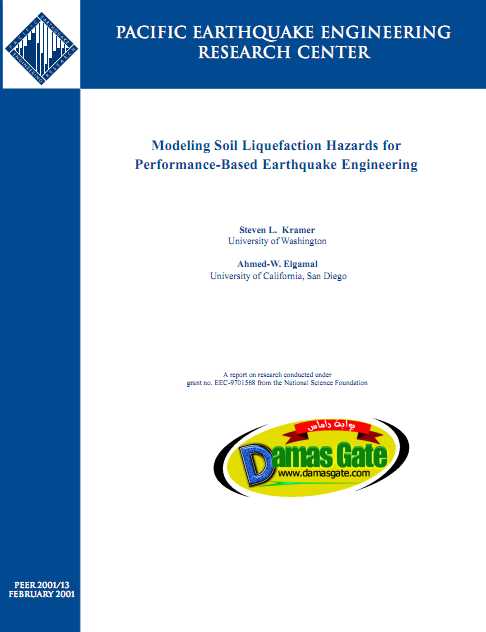Modeling Soil Liquefaction Hazards for Performance-Based Earthquake Engineering

Modeling Soil Liquefaction Hazards for Performance-Based Earthquake Engineering
Steven L. Kramer Professor
Department of Civil and Environmental Engineering University of Washington
and
Ahmed-W. Elgamal
Professor Department of Structural Engineering
University of California, San Diego
A report on research conducted under grant no. EEC-9701568 from the National Science Foundation
PEER Report 2001/13 Pacific Earthquake Engineering Research Center
College of Engineering University of California, Berkeley
February 2001
Introduction The performance of structures such as buildings and bridges during earthquakes is strongly influenced by the performance of the soils that support them. Local soil conditions can influence structural performance in two primary ways — by influencing the ground motions that excite the structure and by imposing additional deformations on the structure through ground failure.
The first widespread observations of damage attributed to liquefaction were made in the 1964 Niigata, Japan, and 1964 Alaska earthquakes. In numerous earthquakes since, liquefaction has been deemed responsible for significant damage to buildings and bridges. Liquefaction has been studied extensively over the past 35 years, and substantial advances have been made in understanding the development and effects of this phenomenon. These advances have led to a series of practical procedures for evaluating the potential for occurrence and for estimating its effects. These procedures, however, are almost entirely empirical in nature and, as such, are difficult to apply to the problem of performance prediction for individual structures.
The Pacific Earthquake Engineering Research (PEER) Center is committed to the development of methods and procedures for performance-based earthquake engineering (PBEE). The use of PBEE requires the ability to predict a nearly continuous spectrum of performance states for individual structures. This requirement implies the need for tools and procedures for evaluation of the entire process of liquefaction, from initiation to effects. Recent advances in the understanding of liquefaction-related phenomena offer the promise of improved analytical predictions of the initiation and effects of soil liquefaction.
Download
http://s18.alxa.net/s18/srvs2/02/001...ngineering.rar